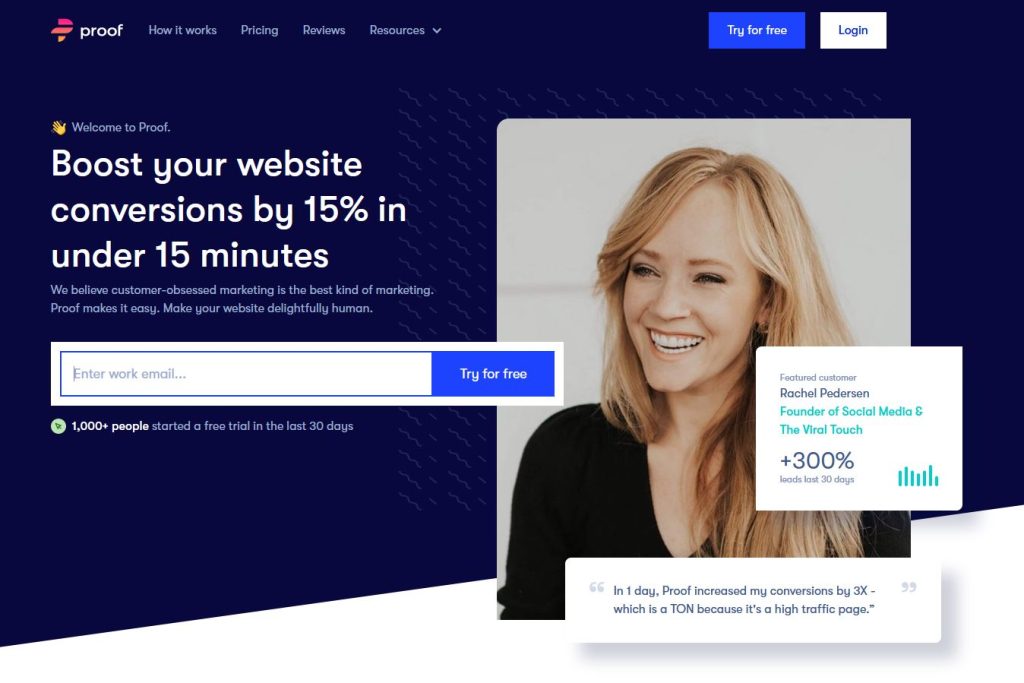#1 What are social networks?
A social network is a platform on which users can network and share content. Each network has a specific focus in terms of topics and content formats. For example, the travel, food, and fashion photos of the #goodlife bubble on Instagram would be out of place on LinkedIn. A detailed specialist article from this network could not prevail on Instagram.
What is also unique about social media is that many-to-many communication prevails here. This means that anyone can become a broadcaster on social networks, so much user-generated contents go online every day.
#2 What are the most popular social networks?
Where is the best place to start if you want to get into social media marketing? Definitely with Facebook, right? In fact, with over 2.4 billion monthly active users worldwide, Facebook is in the top 3 of all websites.
A proud 74 percent of all registered log in to Facebook every day, as Hootsuite determined in early 2019.
This Statista survey of the world’s largest social networks based on monthly active users is also based on the Hootsuite report. Here is a small ranking of the most important platforms:
- YouTube: Did you know that by 2022, video will account for 82 percent of all internet traffic? High time to get started!
- Instagram: The focus is on visual content with many opportunities for interaction. The swipe-up function, polls, Q&As: use the story format or post live videos on IGTV!
- Twitter – perfect for customer support and infotainment
- LinkedIn – like Xing, is primarily geared towards B2B and the business sector in general
- Snapchat
- Pinterest: Do you have great product images and want to get people to see them? Create boards for your target audience and encourage them to participate.
#3 How does social media advertising work?
One-to-many communication only works to a limited extent on social media. In the sense of “buy XY,” traditional advertising is, therefore, unsurprisingly, the wrong approach to corporate advertising on the social web. Instead should…
…offer added value to every post, e.g., B. entertainment or information.
…the mix of the content of the individual bars is right. Eighty percent of data or similar has proven to be effective. and 20 percent actual advertising.
…there are opportunities for interaction that are as low-threshold as possible Because the more interaction a post gets, the more interesting it becomes for the network’s algorithm.
Let’s look at this again with an example. The original unpackaged shop in Berlin advertises on Facebook with this post:
Facebook marketing challenge in original packaging
The video is not primarily about the shop itself; it is only a tiny part of the contribution. A few elements are used for this that are guaranteed to arouse interest:
- an enumeration
- “challenge”
- Cost factor – expensive or cheap?
- Zero waste is a common theme
- authentic, relaxed presentation
Original Unverpackt is mentioned as a brand, but the post is primarily entertaining at first glance and potentially offers added value for everyday life. This creates clicks and (ideally) shares – all done right!
Social media strategy from the experts time is money, so we offer our customers the creation of a professional SMM strategy. We look forward to hearing from you if you want to go from 0 to 100 on the social web without detours.
#4 Social media as part of the marketing mix – what does that mean?
What is it actually, this marketing mix? Strictly what the name promises: a mixture of different forms of online marketing. Because social media marketing should not be the strategy but only a part of the overall concept. (And no, social media alone is not enough!) Other essential components in the marketing mix are:
- Email and newsletter marketing
- Search engine optimization (SEO) and website optimization in general
- Search engine advertising (SEA)
- content marketing
- affiliate marketing

What is Proof?
Proof Offers a 14-day free trial and plans based on the volume of your website traffic. It starts at 79 USD per month and if you pay for the whole year the cost is 66 USD per month.
Proof connects with your CRM or website and uses social evidence to increase conversions on your site. This means that it implements social proof messaging (for example: “25 people are viewing this post right now”), shows reviews, and sends videos to potential customers once they have visited your site.
The hit counter and notifications increase the positive perception of customers about your brand. This allows them to see how other people respond to your service or product. In addition, it is effortless to install: copy and paste its code on your site.
You can identify your visitors and examine the path they follow on your website to optimize it and get more conversions in the future. It integrates with a relatively large number of software, and its use is also optimized for the mobile version.